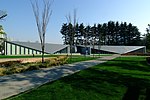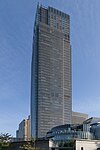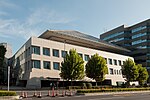Nogi Shrine (Tokyo)

Nogi Shrine (乃木神社, Nogi-jinja) was established on November 1, 1923 and dedicated to General Nogi Maresuke (63) and his wife Nogi Shizuko (53) after their death on September 13, 1912. The Tokyo Mayor, Baron Yoshio Sakatani, took the initiative to organise the Chūō Nogi Kai (Central Nogi Association) to build a shrine to the couple within their residence. It is located in Tokyo, Japan. The shrine compound includes an example of Western architecture constructed during the Meiji period. It is famous as the site where General Nogi and his wife chose to kill themselves after the Meiji Emperor's death. The shrine was opened soon after this event but was destroyed during the 1945 air raids on May 25, 1945. The present shrine was built in 1962.There, Nogi Maresuke (乃木希典, 乃木希典大人之命) is celebrated as a Shinto kami. There are several Nogi Shrines in Japan including the following locations: Nasushiobara, Tochigi Prefecture Fushimi-ku, Kyoto Shimonoseki, Yamaguchi Prefecture Hannō, Saitama Prefecture
Excerpt from the Wikipedia article Nogi Shrine (Tokyo) (License: CC BY-SA 3.0, Authors, Images).Nogi Shrine (Tokyo)
Akasaka-dori, Minato
Geographical coordinates (GPS) Address Nearby Places Show on map
Geographical coordinates (GPS)
| Latitude | Longitude |
|---|---|
| N 35.668888888889 ° | E 139.72805555556 ° |
Address
乃木神社
Akasaka-dori
107-8503 Minato
Japan
Open on Google Maps










